A NATIVE SHRUB IS BLOOMING.
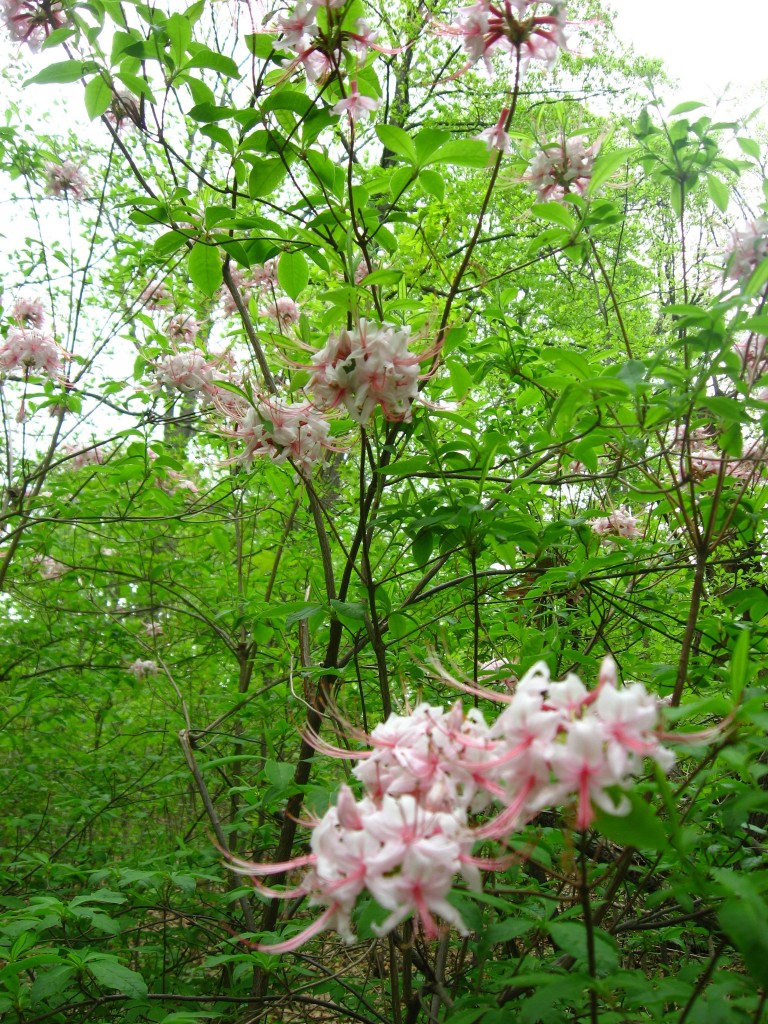
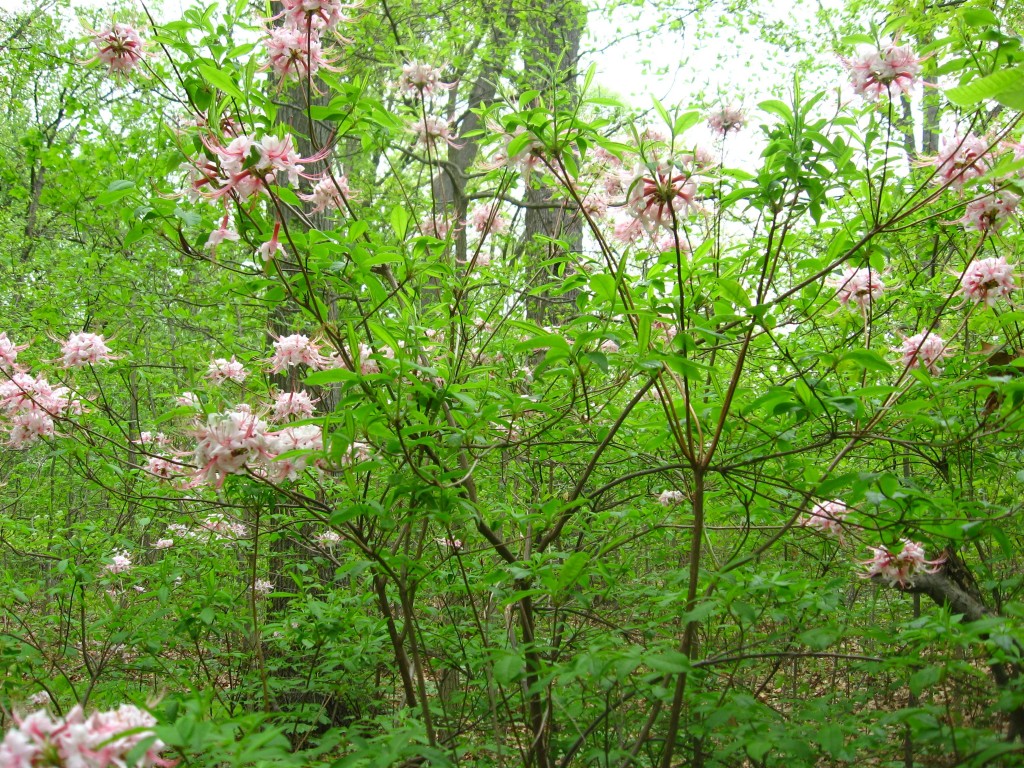
Rhododendron periclymenoides
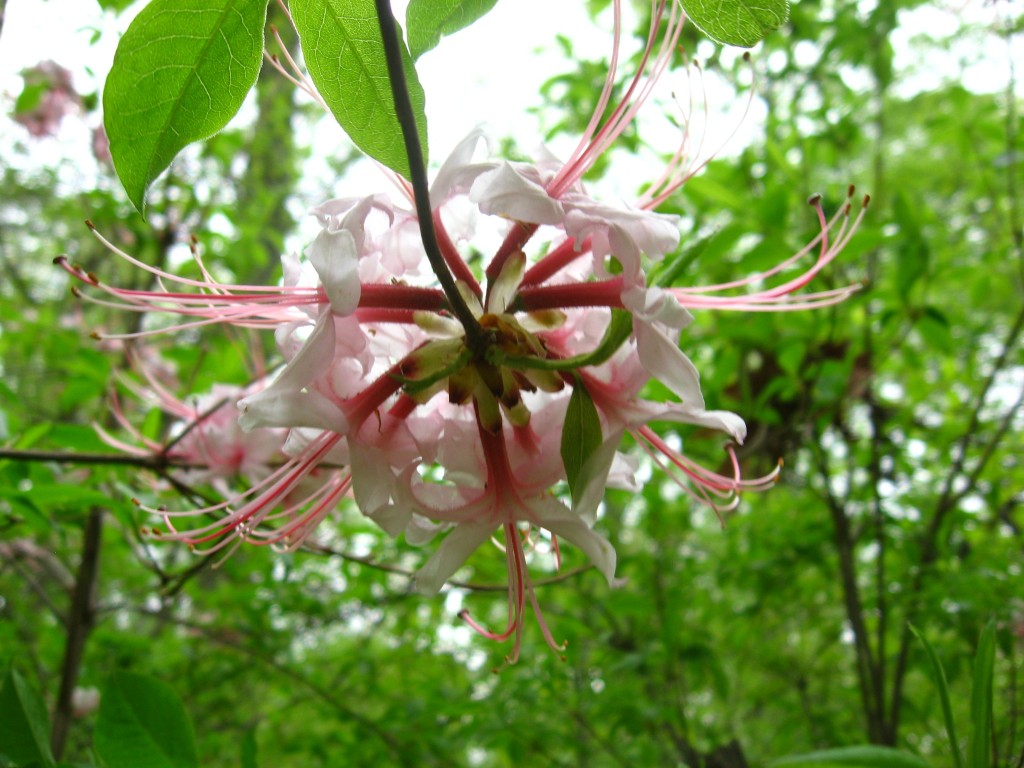
This native shrub grows in the vicinity of the Overlook, the area where the Morris Park Road trail meets the upper trail, which connects Lotus road to Woodcrest Avenue.  The Overlook is a place of special importance, and it is no surprise that there is a fine display of  Rhododendron periclymenoides along the viewing area.  The high diversity of plant species growing in this special area is inspiring, considering the area also offers a view of center city Philadelphia in the wintertime.  This is a moist upland area, and for most of the year, all that can be seen and heard are trees rustling in the wind and a waterfall of the Indian Creek  80 feet below.  Breezes can be afforded in this spot even on hot summer days, that are stifling only a five minutes walk away into the adjacent urban neighborhoods.
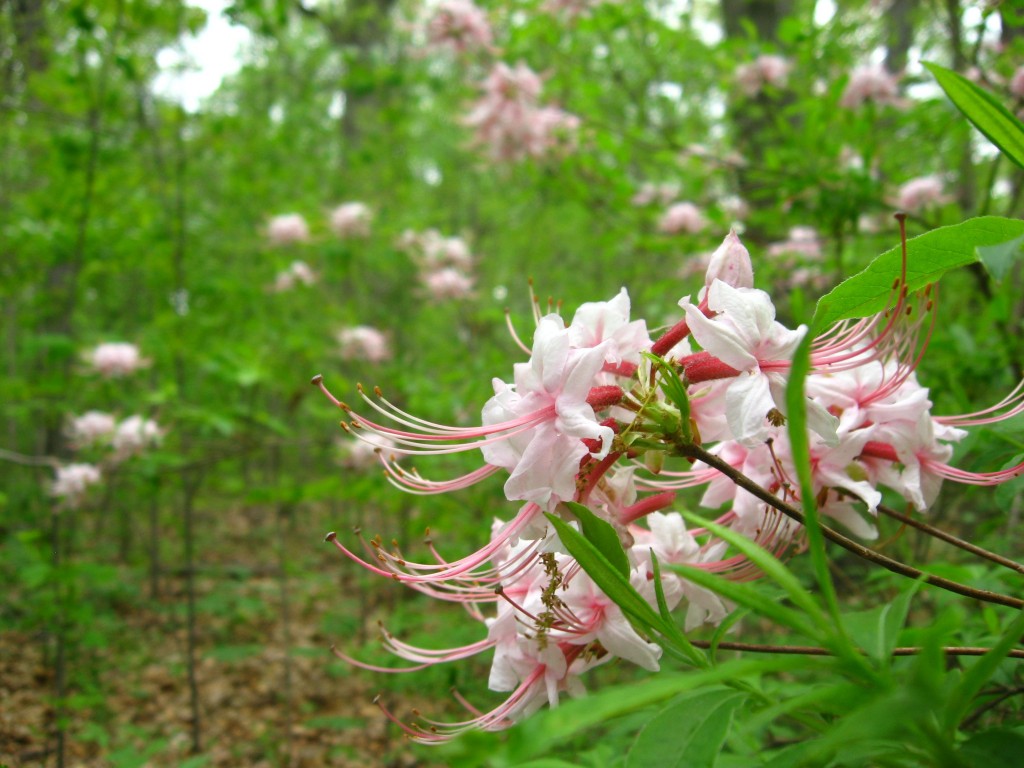
Nestled below a canopy of mature Beeches and Oaks, the shrub layer of Rhododendron periclymenoides can be seen going down the steep hillside, with blooming bushes visible down the hillside where it grows amidst Spicebush and Lowbush Blueberry, and American Chestnut, also a once grand tree that dominated the forest canopy now reduced to the height of a woodland shrub.
The Sanguine Root has been dragging the neighbors out to see the wild Azaleas, some of whom ask “Where are you taking me?” as we lead them further and further into the forest, which eventually opens out into the Overlook area. Any neighbor who shows any inclination of interest about the natural world of the park to the Sanguine Root is given a tour of interesting trees, shrubs and blooming flowers. Also the invasive plants are pointed out and discussed at length. The more the community can learn about the park, and feel that they know a few plants and trees themselves, the more pride they will feel, and the more connected they will be to the place. We are asked about the little umbrellas.  We answer that they are a native wildflower, they are Mayapples, which bloom in late April and early  May, and make a little “apple” that ripens and is edible after its ripe and is associated with the native Box Turtle.  (The turtle likes the ripened fruit, and it is a source of seed dispersal)
The large population of American Chestnut that grows in the area also has sparked the imaginations of many. Â These small shrublike trees with exotic toothed leaves that grow to almost a foot in length grow abundantly in the moist upland areas along the Morris Park Road Path. Each specimen is most likely 10os of years old, the young shoots growing out of an ancient root system. 30 years ago, the vestiges of the original trunks could be excavated from the leaf litter, a circle of rotting wood around the spindly stem of the original tree, but even these remnants have since rotted away. Â The roots are still alive, and are not affected from the chestnut blight, an introduced pathogen (Cryphonectria parasitica) carried into America from Asia, on an imported Chinese chestnut tree. The tree above is susceptible, and dies off every few years. the roots send up new shoots and the tree lives on in the form of a shrub.
The Chinese Chestnut tree is an exotic tree that has carried the Chestnut fungus, that has caused the blight that has all but destroyed the American Chestnut tree, and it is resistant to this fungus, and can grow just fine here in America. Here is an example of an imported, alien plant that is not invasive (at least yet). However, the damage it has cost to our forests is catostrophic and barely quantifiable, although attempts have been made at quantification. Â When we talk about non-native introduced species to our neighbors, we often start with this one.
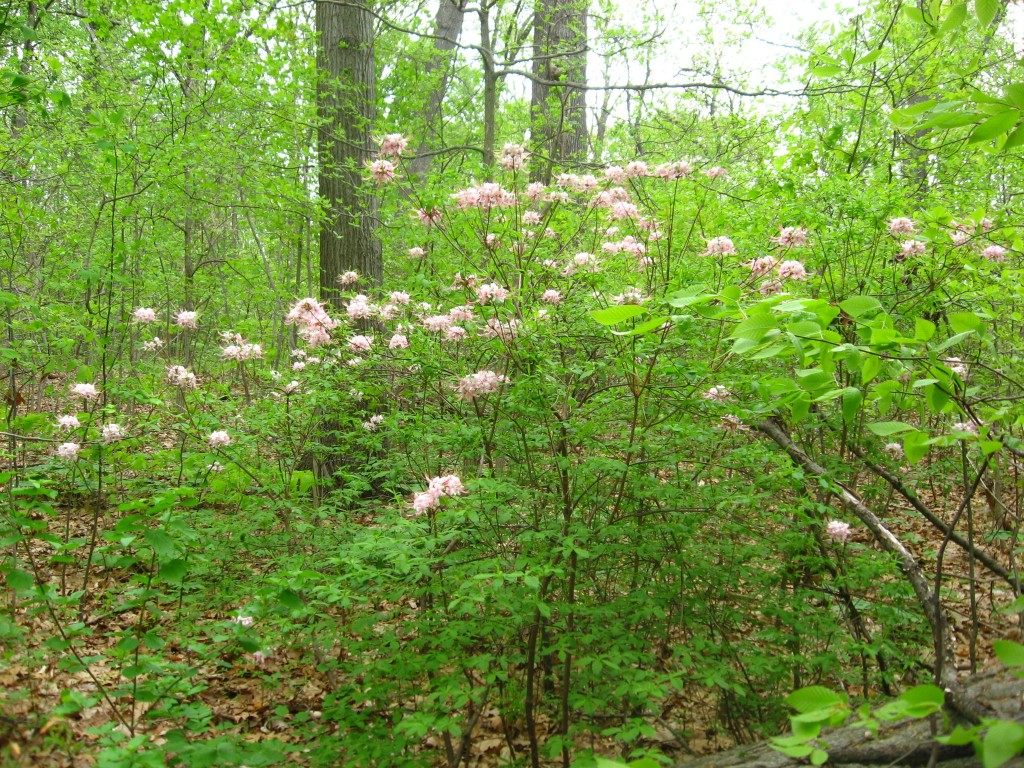
We are happy that the introduced azaleas into America have not brought a fungus that has blighted the beautiful native Azaleas so far. Â This Pinxterbloom azalea is a source of nectar for the Monarch butterfly, for one.
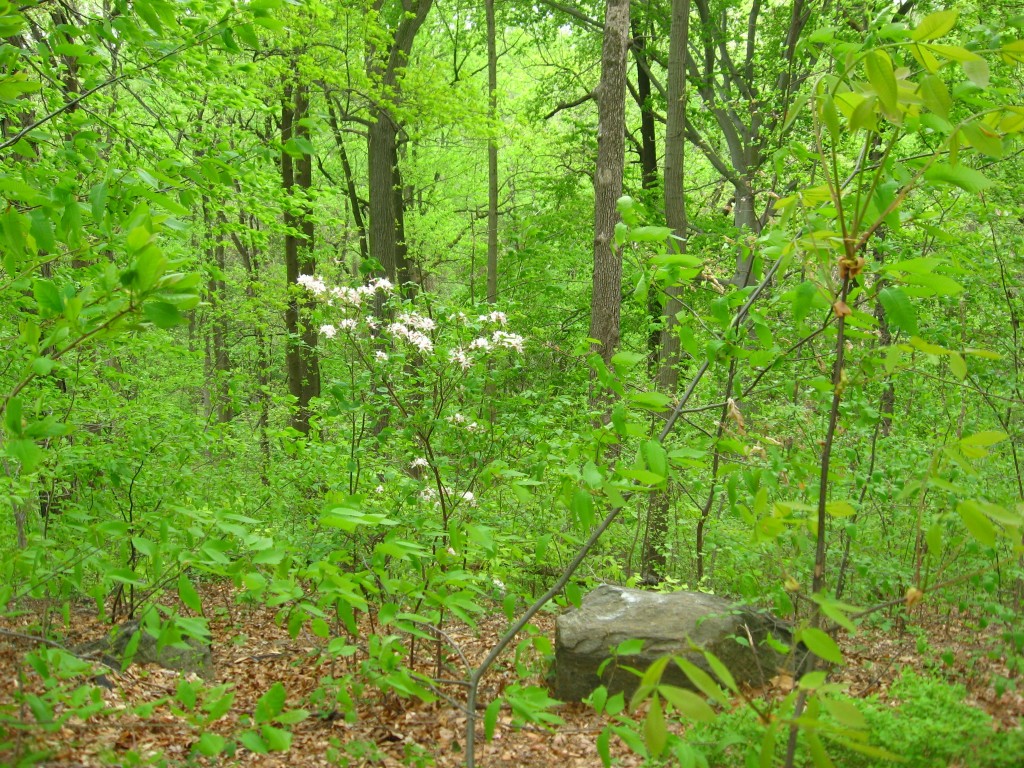
Here is the view we have been talking about all this time. This picture, taken this morning, is from the Lookout.  At the very front, to the right, is the spindly specimen of the American Chestnut, Castenea dentata. To the immediate left is a rock, part of the Wissahickon Schist formation, a metamorphic rock, much in need of discussion.  To the left of the rock is a Rhododendron periclymenoides, the Pinxterbloom azalea, just growing on the rich upland hillside. On a balmy spring day, the Overlook is a happy place, with blooming Mayapples, and every tree and shrub leafing out.
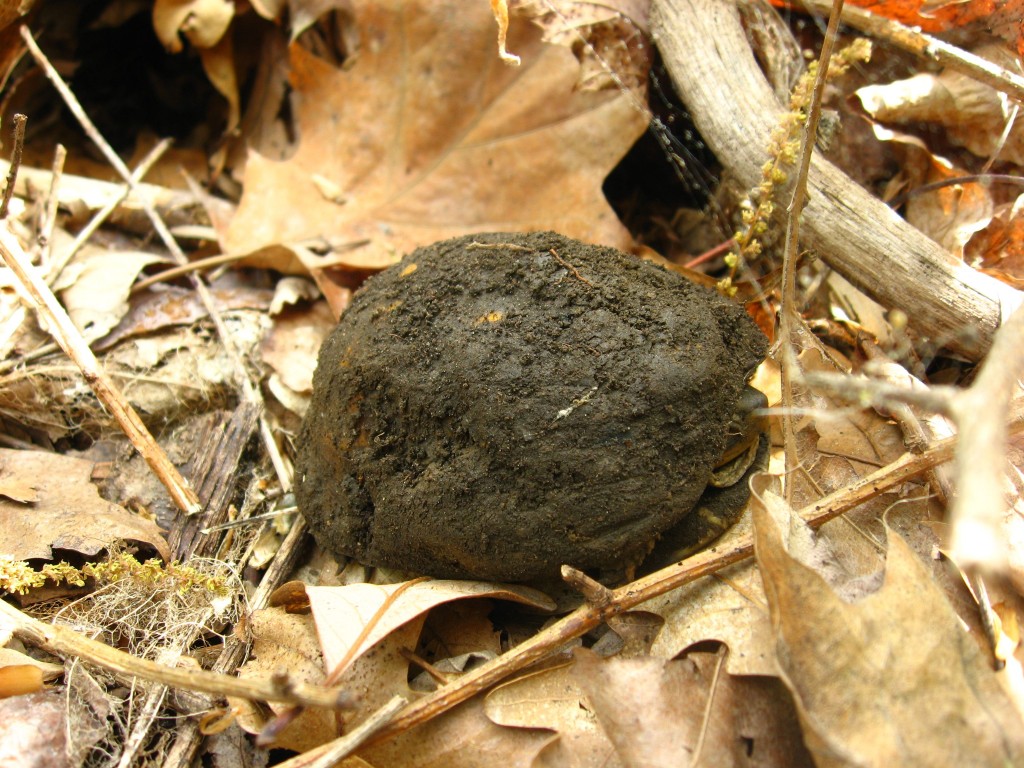
On the way back from the visit with the Blooming Pinxterbloom azaleas in full bloom, this little muddy Box turtle was found. It had been somewhat hot in the past few days, and was due to rain in the afternoon. Â Perhaps after keeping cool under the leaf litter, this one was ready for a shower. This one looks like it was under there for quite some time. Was it hibernating? Anyone want to chime in about this?



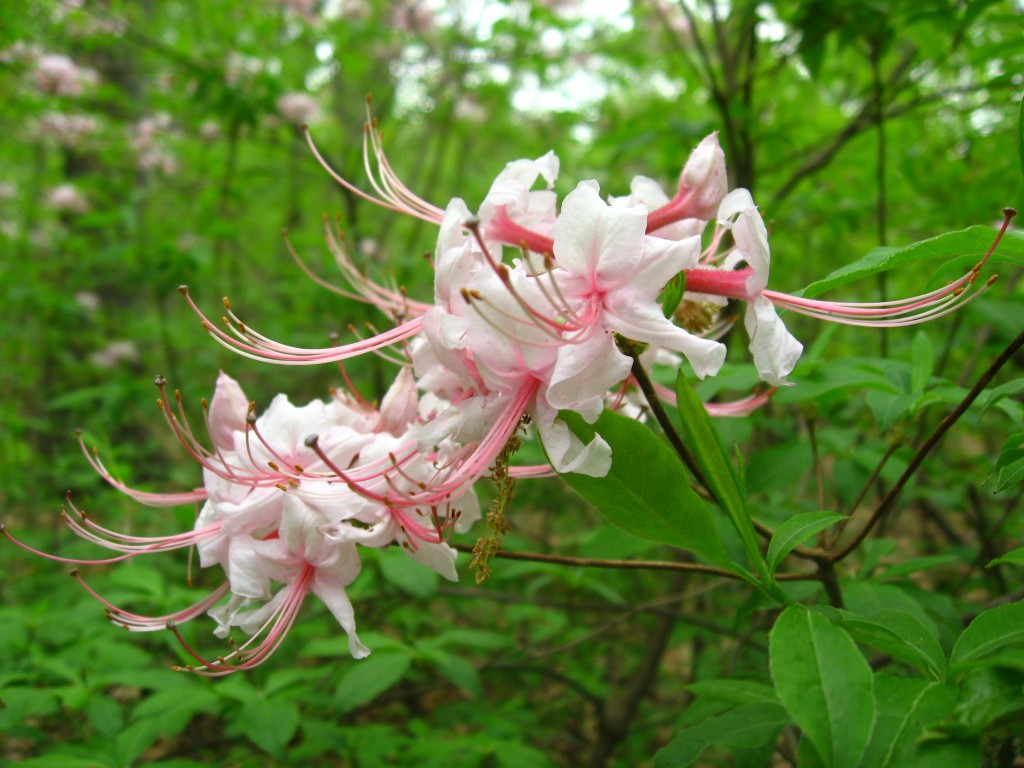
The box turtle covered in mud is really a sight. It looks like nothing more than a rock or mudball. The azalea photos are super!
Finding the muddy turtle was so exciting, catching it in this particular moment in its natural state.